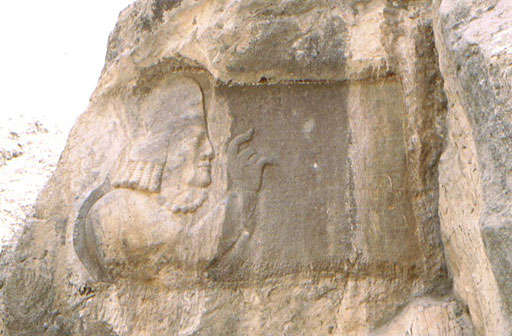Kartir Inscription, Naqsh e Rajab, Iran
Additional note:
In the Sassanid king Khossrow (Khosro, Khusrau) I Anushirvan’s time (531-579 AD) the Iranian Empire was divided into four administrative regions (koosts).
Kartir Inscription, Naqsh e Rajab, Iran
In his inscription, Kartir, the Zoroastrian high-priest living in the third century and contemporary of three Sassanid kings, speaks of the spreading of the Fire of Mughan (=magi of Zoroastrianism) and distinguishes interior lands of the Iranian empire from Aniran (lands outside Iran) where Aghvank also is a part of, confirming the fact that it was not a part of an imaginary “Azerbaijan”.
“…And I made prosperous many fires and magi in the empire of Iran. And I also, by command of the King of Kings, put in order those magi and fires which were for the territory outside Iran, wherever the horses and men of the King of Kings arrived -- the city of Antioch and the country of Syria (12) and what is beyond Syria, the city of Tarsus and the country of Cilicia and what is beyond Cilicia, the city of Caesarea and from the country of Cappadocia to Galatia, and the country of Armenia and Georgia, and Albania (Aghvank H.), and from Balaskan to the Alans' pass. And Shahpur, King of Kings, with his own horses and men visited with pillaging, firing, and havoc. (13) But I did not allow damage and pillaging, and whatsoever pillaging had been made by any person, those things I had taken away and returned to their own country.”


0 Comments:
Post a Comment
<< Home